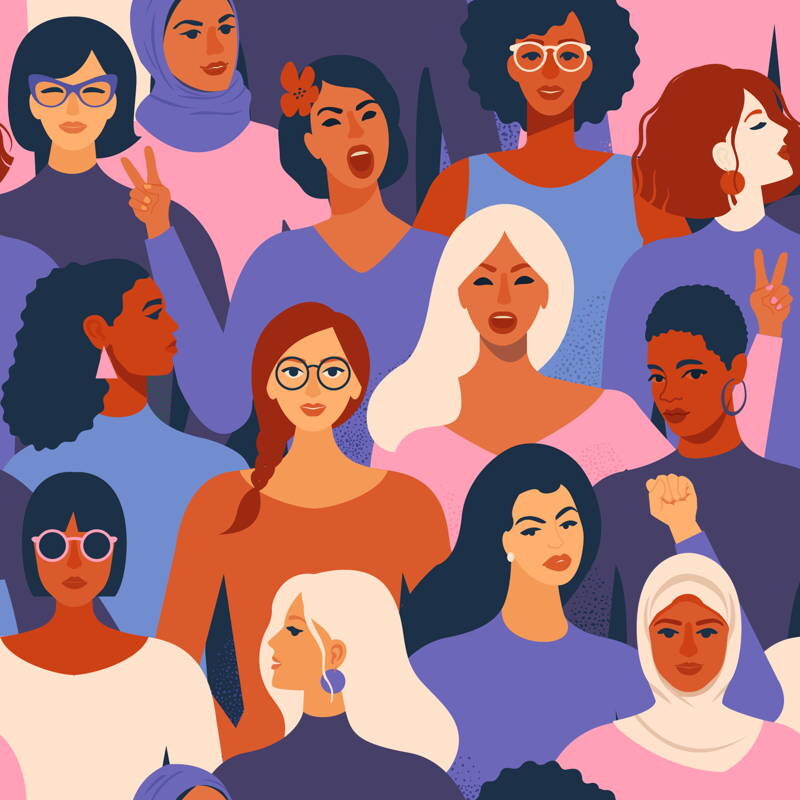
The gender pay gap is real, and every working woman is likely to bear its brunt. As the term suggests, the ‘gender pay gap’ is defined as the average difference between the remuneration paid to women and men, often for doing the same work. The big debate isn’t whether the wage gap exists, it is why it exists. Is it caused due to gender discrimination or is it because of the different choices men and women make in the labor market? If you are curious to find out what causes the wage gap and why it should matter to you, keep reading.
What Causes The Gender Pay Gap?
There is a gender pay gap among full-time workers around the world. But, the size of the gap varies dramatically by country. Essentially, the wage gap stems from a series of choices individuals face and make in their professional lives, such as their fields of education, occupation, sector, size of the company, additional training on the job, and working hours. However, these are the four root causes of the gender pay gap:
1. Men Dominate The Highest-Paying Jobs
As of 2018, there are only 24 female CEOs in all the Fortune 500 companies (1). That number is equivalent to just under 5% of the total list. The Wall Street Journal recently found that women CEOs still get paid a fraction of what their male counterparts earn. High-paying fields like engineering and finance are less than 25% female (2).
2. Women In Male-Dominated Fields Earn Far Less Than Men
In corporate America, women make up just 11% of the highest paid jobs (3).
Female doctors make 27.7% less than their male peers in 2017, according to a new survey done on 65,000 physicians by Doximity, a social networking platform for health care professionals (4).
3. Even In Female-Dominated Fields, Men Still Earn More
Women earn less than men even in some of the largest female-dominated occupations (like nursing, childcare, and teaching). Men make up just 2.5% of all preschool and kindergarten teachers, but they earn 13% more on average (5).
4. The Motherhood Penalty
The ‘motherhood penalty’ is a term coined by sociologists who argue that working mothers encounter systematic disadvantages in the workplace in matters of pay, benefits, and perceived competence when compared to childless women. According to a report published recently by the American Sociological review, women face a “motherhood penalty” of 4% of income for each child they have.
What Is The Difference Between ‘Gender Pay Gap’ & ‘Equal Pay’?

While both ‘gender pay gap’ and ‘equal pay’ deal with the disparity in pay women encounter in the workplace, they are two different concepts. Here’s the main difference between the two:
Equal Pay For Equal Work
‘Equal pay’ is the principle of non-discrimination in compensation for work. This concept of labor rights states that men and women should be paid the same amount of money for doing the same job.
Gender Pay Gap
As we discussed earlier, ‘gender pay gap’ is the difference in the median hourly earnings of men and women across all roles.
The wage gap is an extremely complex web of interwoven factors. Sometimes, wage differences are inevitable, but huge pay gaps can become an issue not just for you as an individual, but for the society as a whole. Closing the gender pay gap is not just the right thing for companies to do, but also the smart thing to do.
How To Close The Gender Wage Gap
Below are a few steps that can be taken to decrease the gender pay gap and help women break the glass ceiling.
1. Treat Closing The Wage Gap As A Human Rights Priority
Closing the wage gap is not a priority both in employer practices and public policy, but this has to change. As set out in the preamble to the International Labor Organisation’s constitution, women have the right to equal pay for work of equal value, and more companies need to encourage this principle.
2. Ensure Transparency In Salary
The principle of transparency does not have to automatically give one the right to know what someone else earns. However, employees should have the right to know how the calculations are made. Organizations need to adopt a purely meritocratic system to increase fairness, opportunities, and equity.
3. Companies Should Conduct A Pay Audit
Companies today are becoming more transparent with their pay practices. Conducting a pay audit won’t leave the employees guessing what factors are driving their pay.
4. Ensure Fair Promotions And Hiring
Companies can train managers to understand the impact of gender bias on their decision-making. Setting clear and consistent criteria in place to reduce bias in hiring decisions and performance reviews will help narrow the wage gap.
5. Women Should Be Given Equal Opportunities For Advancement
It is necessary that women have equal access to opportunities that accelerate careers. Companies need to actively encourage women to take more chances and go for opportunities they desire.
6. Enforce Paternity Leave
In order to foster an equal work environment, companies should give good parental leave that’s gender neutral to encourage men to play a more active role in child-rearing.
Presently, the global gender pay gap is 23%, and at the current pace of change, it will take about 202 years to close and achieve full equality in the workplace. (Sadly, we’ll all be dead by then.) It is crucial now more than ever that we take action and start to value the work women do and reduce this disproportionate burden of both unpaid care and domestic work. Equal Pay Day offers the perfect opportunity to call attention to the gender wage gap and spread awareness about its impact on the plight of women and the economy.
If we want to bring about change, we first need to collectively acknowledge the true magnitude of the threat that the gender pay gap poses to each one of us. Because, here’s the thing: the wage gap is an ugly, persistent truth an.d it really is about time we started leveling the playing field between working men and women.























